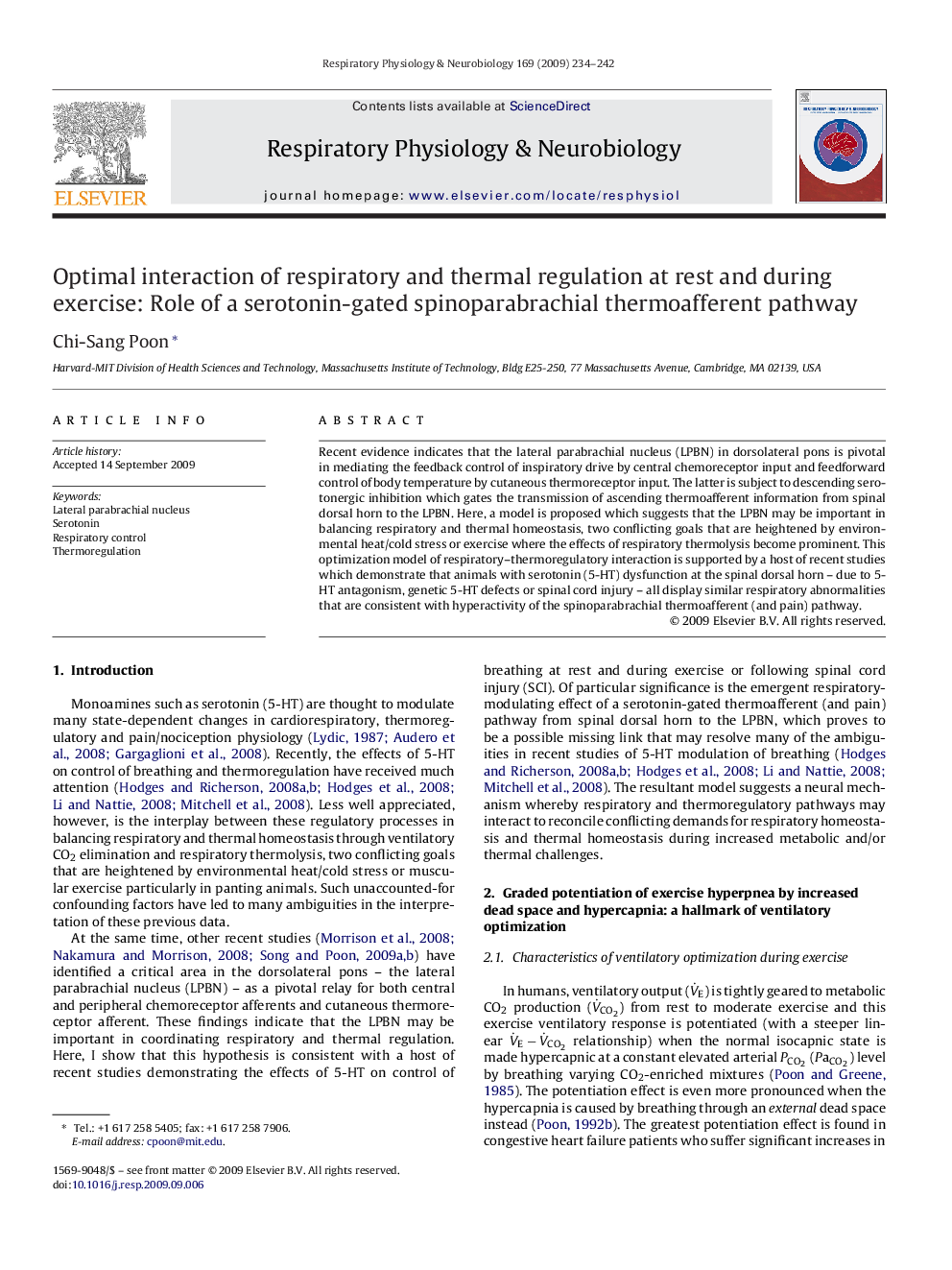| Article ID | Journal | Published Year | Pages | File Type |
|---|---|---|---|---|
| 2847740 | Respiratory Physiology & Neurobiology | 2009 | 9 Pages |
Recent evidence indicates that the lateral parabrachial nucleus (LPBN) in dorsolateral pons is pivotal in mediating the feedback control of inspiratory drive by central chemoreceptor input and feedforward control of body temperature by cutaneous thermoreceptor input. The latter is subject to descending serotonergic inhibition which gates the transmission of ascending thermoafferent information from spinal dorsal horn to the LPBN. Here, a model is proposed which suggests that the LPBN may be important in balancing respiratory and thermal homeostasis, two conflicting goals that are heightened by environmental heat/cold stress or exercise where the effects of respiratory thermolysis become prominent. This optimization model of respiratory–thermoregulatory interaction is supported by a host of recent studies which demonstrate that animals with serotonin (5-HT) dysfunction at the spinal dorsal horn – due to 5-HT antagonism, genetic 5-HT defects or spinal cord injury – all display similar respiratory abnormalities that are consistent with hyperactivity of the spinoparabrachial thermoafferent (and pain) pathway.
